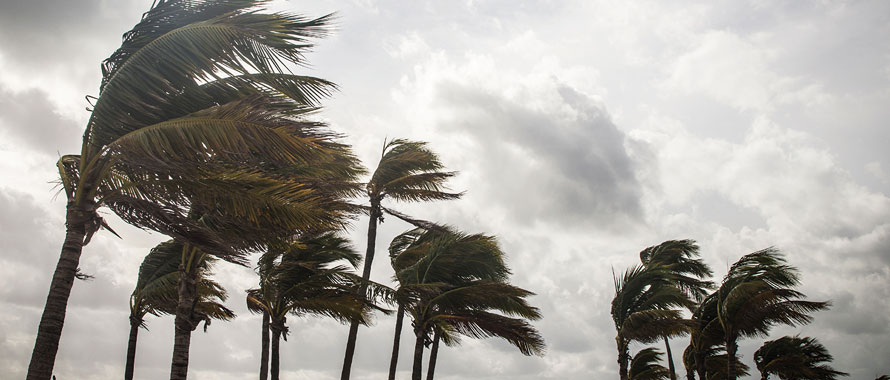39 percent of the U.S. population lives in counties located directly on the shoreline. This opens more than 123.3 million Americans up to the potential of hurricane damage. With the median cost of damage from one Atlantic hurricane averaging $1.8 billion, proper insurance is imperative. These staggering costs do not necessarily disappear with suitable coverage. The insurance carrier would cover the costs associated with the hurricane, deferring the burden of the financial distress from the insured.
“June 1 through November 30 represents active hurricane season in the United States,” said Amanda Ruppel, Associate Managing Director, Burns & Wilcox. “Gulf Coast states, spanning from Texas to Maine, carry the most risk.”
With the numerous intricacies to Wind and Excess Wind coverage it is important for brokers and agents to work closely with clients in high-risk regions to protect against potential gaps in standard coverage.
Government-subsidized wind pools
Many coastal states have what is known as a wind pool. A wind pool is coverage for wind and hail damage along the coastline of a state. Many high-net-worth clients need Excess Wind insurance for higher value personal property that exceed the government-subsidized wind pools.
“Depending on the state wind pool, brokers and agents should understand the limit to make sure their client is covered,” said Donna Dodd, Vice President, Director, Personal Insurance, Burns & Wilcox. “If the wind pool covers personal property up to $1 million and the home is worth $5 million, an Excess Wind policy would be needed to cover the insurable difference.”
South Carolina’s Wind Pool, for example, covers $1.3 million for personal dwellings, mobile homes and condominiums, including structure, contents, loss of use and increased cost of construction.
Wind mitigation inspection
“It is common in Florida and other coastal markets to request wind mitigation inspection documents in order to determine if the home qualifies for premium credits to help reduce the cost of wind coverage,” said Ruppel.
Wind mitigation inspections look at items such as hurricane wraps (roof-to-wall connections), whether it has a hip roof (slopes on all four sides), if the roof is up to code and if high-impact rated protection is in place such as hurricane shutters and glazed openings. This relatively low-cost inspection gives the insurer a better idea of how a home can withstand wind damage. The date the home was built generally factors into the premium as older homes have fewer protections, increasing the exposure to damage. Newer or recently renovated homes are more likely to receive credits towards the policy.
“Brokers and agents should advise their coastal clients to obtain these inspections,” added Ruppel. “It not only speeds up the underwriting process, but can potentially help the client save money in the long run.”
Without having a proper wind mitigation inspection performed, clients may be spending too much for insurance.
Deductible buy-back program
Deductibles can be very expensive when it comes to Wind and Excess Wind coverage. Wind buy-back insurance allows a homeowner to decrease the percentage of the wind deductible on a property. Deductibles of up to 10 percent are described as an increased financial burden on that of the insured.1
Deductible buy-back programs can reduce cost from a percentage of the property value to a fixed amount, potentially saving the insured thousands of dollars for a wind-related claim.
Binding suspensions
“Clients currently without coverage often wait until it is too late to ask their broker or agent for a Wind or Excess Wind policy,” said Ruppel. “Once there is a tropical storm system approaching, many insurance carriers will issue a binding suspension until the storm threat passes.”
Binding suspension means that insurance companies and coverholders will withhold from writing policies until a tropical storm or hurricane watch or warning is complete. Renewals that are set to expire at this time are one of the only exceptions to this rule.
Wind Only policies
Where carriers are limiting their exposure in coastal counties, they may offer standard Homeowners coverage with the peril of windstorm excluded. In this case, it may be in the insured’s best interest to obtain a separate Wind Only policy. The advantage of two policies is for the insured to have the optimum coverage under a standard Homeowner’s policy with the ability to bundle other coverages, while still having protection for wind, hail and wind-driven rain.
“Depending on the client’s property risk or prior loss history, a Wind Only policy can be created separate from All Other Perils,” said Dodd. “A named storm policy is not a standalone policy like Wind, but clients may prefer to add a Named Storm policy on their Homeowner’s policy.”
“Locking in insurance coverage before the June 1 start of hurricane season will help minimize any potential issues,” added Ruppel.
Preventing E&O claims
To assist in preventing Errors & Omissions (E&O) claims, it is important to be aware of each client’s location and property value.
“Brokers and agents should review their portfolios to determine which accounts do not include Wind coverage so they are able to provide the insured with an option for coverage to prevent an E&O claim in the event of a wind, hail or hurricane related loss,” said Ruppel.
For coastal brokers and agents, educating themselves and clients on the intricacies of Wind and Excess Wind coverage is paramount. As more client’s move and retire in Southern coastline states, brokers and agents should prepare themselves to keep the lines of communication open.
SOURCES: 1. PropertyCasualty360





